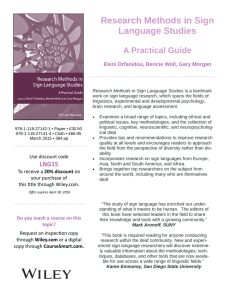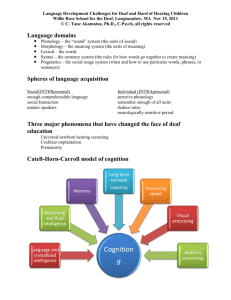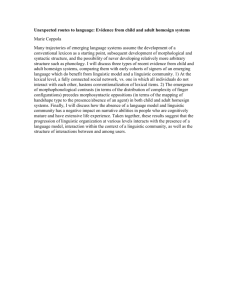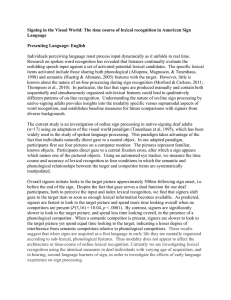Phonological segments, syllables and lexical components: a parallel linguistic
advertisement
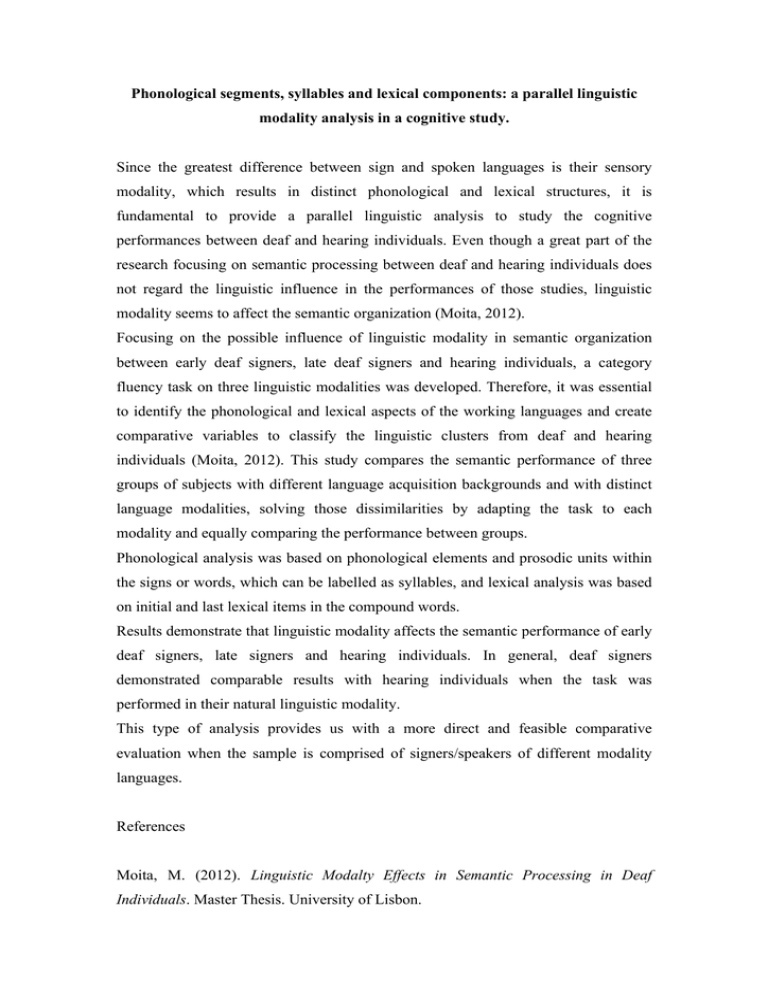
Phonological segments, syllables and lexical components: a parallel linguistic modality analysis in a cognitive study. Since the greatest difference between sign and spoken languages is their sensory modality, which results in distinct phonological and lexical structures, it is fundamental to provide a parallel linguistic analysis to study the cognitive performances between deaf and hearing individuals. Even though a great part of the research focusing on semantic processing between deaf and hearing individuals does not regard the linguistic influence in the performances of those studies, linguistic modality seems to affect the semantic organization (Moita, 2012). Focusing on the possible influence of linguistic modality in semantic organization between early deaf signers, late deaf signers and hearing individuals, a category fluency task on three linguistic modalities was developed. Therefore, it was essential to identify the phonological and lexical aspects of the working languages and create comparative variables to classify the linguistic clusters from deaf and hearing individuals (Moita, 2012). This study compares the semantic performance of three groups of subjects with different language acquisition backgrounds and with distinct language modalities, solving those dissimilarities by adapting the task to each modality and equally comparing the performance between groups. Phonological analysis was based on phonological elements and prosodic units within the signs or words, which can be labelled as syllables, and lexical analysis was based on initial and last lexical items in the compound words. Results demonstrate that linguistic modality affects the semantic performance of early deaf signers, late signers and hearing individuals. In general, deaf signers demonstrated comparable results with hearing individuals when the task was performed in their natural linguistic modality. This type of analysis provides us with a more direct and feasible comparative evaluation when the sample is comprised of signers/speakers of different modality languages. References Moita, M. (2012). Linguistic Modalty Effects in Semantic Processing in Deaf Individuals. Master Thesis. University of Lisbon.
